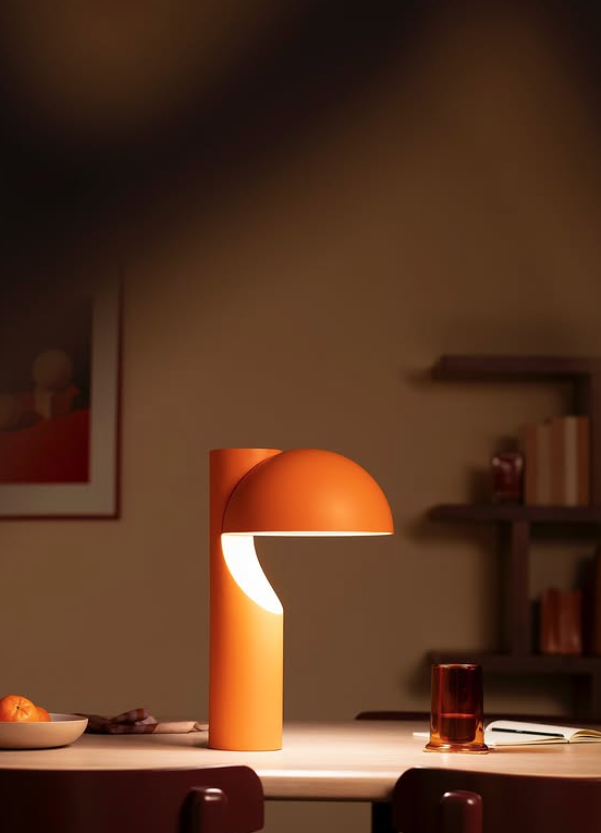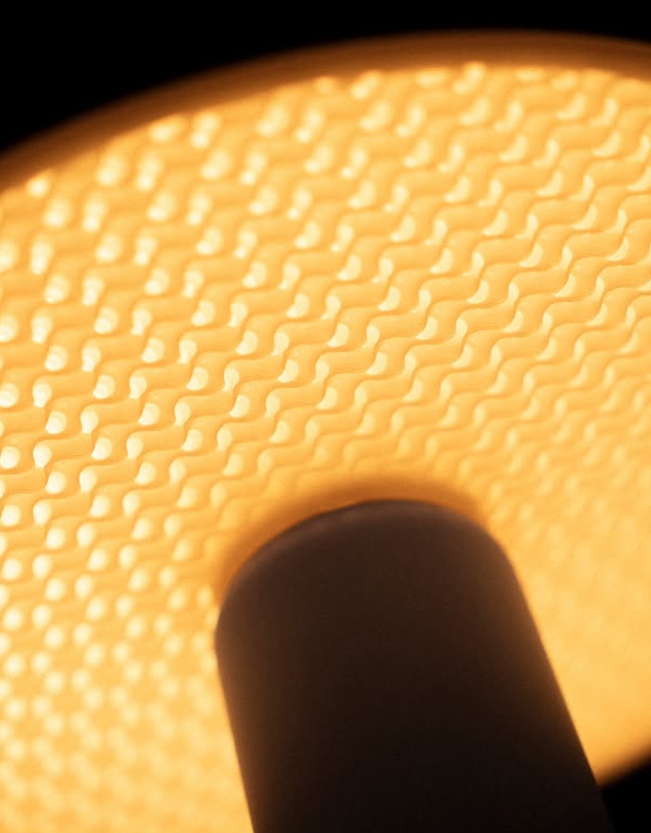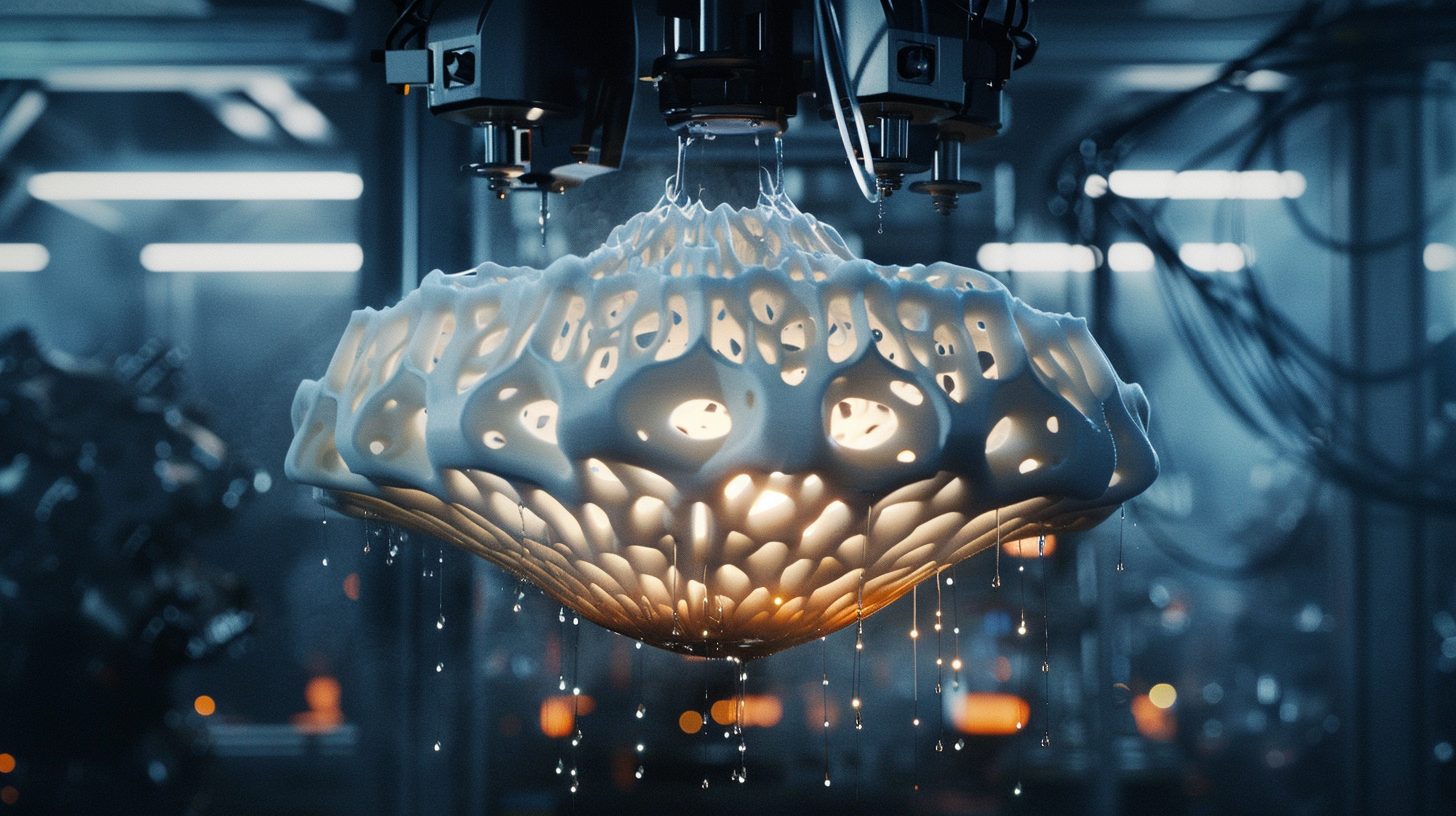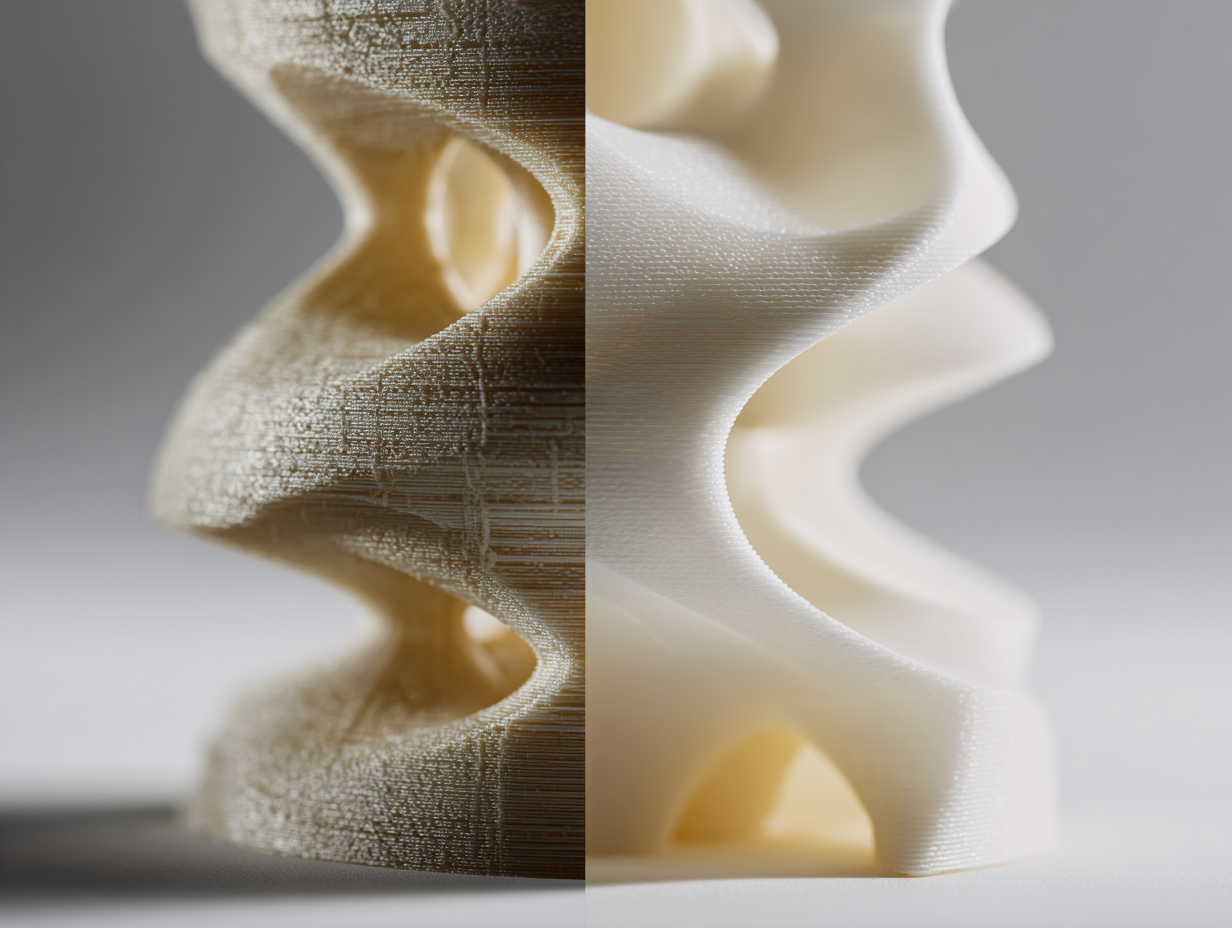
산업용 3D프린팅 기술이 제조업의 패러다임을 바꾸며 다양한 분야에 혁신을 가져오고 있습니다. 특히 조명 분야에서는 기존 금형이나 절삭 가공 방식으로는 상상하기 어려웠던 복잡하고 독창적인 형태를 구현함으로써, 디자이너와 엔지니어 모두에게 빛을 디자인하는 새로운 가능성을 열어주고 있습니다.
과거 3D프린팅 조명이 개인 메이커나 DIY 프로젝트 수준에 머물렀다면, 오늘날의 산업용 3D프린팅은 예술적 디자인 조명을 넘어, 고도의 기능성과 효율성을 요구하는 자동차, 산업 설비 등 전문 분야의 최종 부품(End-use Parts)까지 생산하는 핵심 기술로 자리 잡았습니다.
예술적 디자인과 맞춤형 조명: 산업용 3D프린팅의 역할


"복잡함이 자유롭다"는 3D프린팅의 핵심 강점은 조명 디자인에 무한한 가능성을 부여합니다. 글룩과 같은 전문 3D프린팅서비스기업은 디자이너의 창의적인 비전을 현실로 구현하는 기술적 파트너 역할을 합니다.
샌프란시스코의 스타트업 겐트리(Gantri)는 디자이너 조명의 높은 비용과 비효율적인 생산 문제를 해결하기 위해 산업용 3D프린팅을 도입했습니다. 이들은 식물 기반의 맞춤형 PLA 필라멘트와 자체 개발한 대규모 전용 3D프린터를 통해, 디자인 개발 시간을 1년에서 12주로 단축하고 주문형 생산(On-Demand) 방식으로 프리미엄 조명을 합리적인 가격에 제공합니다.
이는 산업용 3D프린팅이 ‘맞춤 제작’과 ‘대량 생산’이라는 상반된 개념을 성공적으로 결합할 수 있음을 보여주는 사례입니다. 디자이너는 재고 부담 없이 다양한 디자인을 시도하고, 글룩의 대량생산 시스템을 통해 검증된 디자인을 시장에 신속하게 공급할 수 있습니다.
기능성 및 산업용 조명: 기술의 한계를 넘어서다

산업용 3D프린팅은 단순히 미학적인 조명을 넘어,
고도의 기능성과 효율성을 요구하는 산업 분야에서 혁신적인 솔루션을 제공합니다.
- 자동차 지능형 조명: 자동차 지능형 조명 전문 기업 Henvvei는 3D프린팅을 통해 맞춤형 레이저 및 LED 헤드라이트 시스템을 제작합니다. 이는 복잡한 내부 방열 구조와 정밀한 광학 설계를 가능하게 하여, 운전자의 시야를 최적화하고 첨단 운전자 지원 시스템(ADAS)의 성능을 극대화합니다.
- 산업 설비 조명: HP Multi Jet Fusion(MJF) 기술은 거리 조명 설비의 최종 부품 프로토타입을 제작하는 데 활용되어, 제품 출시 기간과 금형 비용을 획기적으로 단축시켰습니다.
- 기능성 부품 개발: 식물 조명 장치를 위한 LED 모듈 시제품 사례처럼, 특정 기능에 최적화된 조명 부품을 산업용 3D프린팅으로 신속하게 제작하고 검증할 수 있습니다. 이는 R&D 기간을 단축하고 부서 간의 효율적인 협업을 가능하게 합니다.
성공적인 3D프린팅 조명 설계를 위한 기술적 고려사항

성공적인 3D프린팅 조명을 제작하기 위해서는
빛의 특성, 열 관리, 전기 부품 통합 등 다양한 요소를 디자인 단계부터 통합적으로 고려해야 합니다.
1. 빛 확산 설계 조명의 핵심은 빛을 어떻게 효과적으로 확산시키느냐에 있습니다. 산업용 SLA 3D프린팅은 투명하거나 반투명한 레진을 사용하여 빛의 투과율을 정밀하게 제어할 수 있습니다. 벽 두께를 미세하게 조절하여 빛의 강도를 제어하거나, 광확산 PC와 같은 전문 소재를 사용하여 눈부심 없이 균일한 빛을 제공하는 고품질 디퓨저 제작이 가능합니다.
2. 열 관리 및 방열 설계 (DFAM 적용) LED는 수명과 효율에 큰 영향을 미치는 열을 다량 발생시킵니다. 고전력 LED의 경우 효과적인 방열 설계가 필수적입니다. 산업용 3D프린팅, 특히 금속 3D프린팅은 DfAM(적층 제조 특화 설계) 전략을 통해 기존 방식으로는 불가능했던 복잡한 내부 공기 흐름 구조나 유기적인 형태의 방열판(히트싱크)을 구현할 수 있습니다. 이를 통해 방열 성능을 극대화하고, LED의 수명과 조명의 안전성을 보장합니다.
3. 전기 부품 통합 및 배선 3D프린팅은 LED 광원, 스위치, 전원 소켓, 케이블 등을 위한 공간을 설계 단계에서부터 구조 내부에 완벽하게 통합할 수 있습니다. 이는 외부 노출 없는 깔끔한 마감과 안전한 배선 처리를 가능하게 하여, 제품의 완성도와 신뢰성을 크게 높여줍니다.
조명 디자인에 적합한 3D프린팅 기술 비교

각 3D프린팅 기술은 고유한 장단점을 가지므로, 조명 디자인의 목표에 따라 최적의 기술을 선택하는 것이 중요합니다.
- FDM (용융 적층 모델링): 가장 경제적이고 접근성이 뛰어나 DIY나 기본적인 시제품 제작에 적합합니다. 하지만 표면 조도와 정밀도가 낮아 프리미엄 조명 제작에는 한계가 있습니다.
- SLS (선택적 레이저 소결): 서포트 없이 복잡한 형상 제작이 가능하고 기계적 특성이 우수하여 내구성이 요구되는 기능성 조명 부품이나 대량생산에 유리합니다.
- SLA (광경화성 수지 조형): 글룩의 핵심 기술로, 액상 레진을 UV 레이저로 경화시켜 매우 높은 치수 정확도와 사출 성형급의 매끄러운 표면 조도를 제공합니다. 투명 레진을 활용한 빛 확산 효과나 섬세하고 정교한 디자인의 프리미엄 조명 제작에 가장 이상적인 방식입니다.
3D프린팅 조명의 미래: 지속 가능성과 개인화

산업용 3D프린팅 기술은 조명 산업의 미래를 개인화와 지속 가능성이라는 두 가지 핵심 트렌드로 이끌고 있습니다.
- 지속 가능한 조명: 시그니파이(Signify)는 100% 재활용 가능한 폴리카보네이트 소재로 3D프린팅 조명을 제작하여 탄소 발자국을 최대 47%까지 줄였습니다. 또한, 폐CD나 버려진 어망을 재활용한 소재를 사용하는 사례는 3D프린팅이 순환 경제에 기여하는 방식을 보여줍니다.
- 주문형 생산과 맞춤형 시장: 소비자가 직접 램프의 형태, 크기, 색상 등을 선택하여 주문하는 초소량 커스터마이징 시장이 열리고 있습니다. 산업용 3D프린팅은 금형 없이 원하는 디자인을 즉시 출력할 수 있어, 낭비 없는 주문형 생산을 가능하게 합니다.
산업용 3D프린팅은 조명 디자인의 경계를 허물고 기술, 예술, 환경을 하나로 통합하는 혁신적인 도구입니다. 글룩은 예술적 감성을 담은 디자인 조명부터 산업용 고기능 조명까지, 고객의 모든 아이디어를 현실로 구현하는 최적의 기술 파트너입니다.
GLUCK은 대량생산이 가능한 산업용 3D프린팅 서비스 기업입니다. 작은 아이디어를 반복 가능한 생산성으로 전환해, 현실 가능한 제조 솔루션을 제공합니다.
지금 글룩에 문의해 보세요.
📩 제작 및 상담 문의: https://glucklab.com/
3D Printed Lighting Technology: Designing Light with Industrial Solutions

Industrial 3D printing technology is changing the paradigm of manufacturing and bringing innovation to various fields. In the lighting industry, in particular, it is opening up new possibilities for designing light for both designers and engineers by enabling the creation of complex and original forms that were unimaginable with traditional manufacturing methods.
While 3D printed lighting was once confined to the level of individual makers or DIY projects, today's industrial 3D printing has evolved into a core technology that produces not only artistic design lighting but also final-use parts for professional sectors that demand high functionality and efficiency, such as automotive and industrial equipment. This article will take an in-depth look at how GLUCK's industrial 3D printing solutions are illuminating the future of the lighting industry by satisfying both artistic design and functional requirements.
Artistic Design and Custom Lighting: The Role of Industrial 3D Printing


The core strength of 3D printing—"freedom in complexity"—bestows infinite possibilities upon lighting design. Professional 3D printing service providers like GLUCK play the role of a technical partner that brings a designer's creative vision to life.
The San Francisco-based startup Gantri adopted industrial 3D printing to solve the problems of high costs and inefficient production systems for designer lighting. They have reduced their design development time from one year to just 12 weeks and offer premium lighting at a reasonable price through an on-demand production model, using custom plant-based PLA filaments and their own large-scale proprietary 3D printers.
This case demonstrates that industrial 3D printing can successfully combine the concepts of 'customization' and 'mass production,' which were once considered contradictory. Designers can experiment with various designs without the burden of inventory, and through GLUCK's mass production system, they can swiftly bring validated designs to the market.
Functional and Industrial Lighting: Pushing Beyond Technological Limits

Industrial 3D printing offers innovative solutions not just for aesthetic lighting but also for industrial sectors that demand high functionality and efficiency.
- Automotive Intelligent Lighting: The automotive intelligent lighting specialist Henvvei uses 3D printing to create custom laser and LED headlight systems. This enables complex internal heat dissipation structures and precise optical designs, optimizing the driver's field of vision and maximizing the performance of Advanced Driver-Assistance Systems (ADAS).
- Industrial Equipment Lighting: HP Multi Jet Fusion (MJF) technology has been used to produce final part prototypes for street lighting fixtures, dramatically reducing time-to-market and mold costs.
- Functional Component Development: As seen in the case of a prototype for an LED module for a plant lighting device, functionally optimized lighting components can be rapidly produced and validated with industrial 3D printing. This shortens R&D periods and facilitates efficient collaboration between departments.
Technical Considerations for Successful 3D Printed Lighting Design

To successfully create 3D printed lighting, various factors including light properties, thermal management, and electrical component integration must be considered from the design stage.
1. Light Diffusion Design The core of lighting is how to effectively diffuse light. Industrial SLA 3D printing allows for precise control of light transmittance by using transparent or translucent resins. High-quality diffusers that provide uniform light without glare can be produced by finely adjusting wall thickness or using specialized materials like light-diffusing PC.
2. Thermal Management and Heatsink Design (Applying DfAM) LEDs generate a significant amount of heat that affects their lifespan and efficiency. Effective heat dissipation design is essential. Industrial 3D printing, especially metal 3D printing, can create complex internal airflow structures or organic-shaped heatsinks that are impossible with traditional methods, by applying DfAM (Design for Additive Manufacturing) strategies. This maximizes heat dissipation performance and ensures the longevity and safety of the lighting.
3. Electrical Component Integration and Wiring 3D printing allows for the seamless integration of spaces for LED light sources, switches, power sockets, and cables directly into the structure from the design stage. This enables a clean finish without exposed parts and ensures safe wiring, greatly enhancing the product's completeness and reliability.
Comparing 3D Printing Technologies for Lighting Design

Choosing the optimal 3D printing technology is crucial and depends on the goals of the lighting design.
- FDM (Fused Deposition Modeling): Most economical and accessible, suitable for DIY and basic prototypes. However, its lower surface quality and precision limit its use for premium lighting.
- SLS (Selective Laser Sintering): Excellent for producing durable, functional lighting components and for mass production due to its good mechanical properties and the ability to print complex shapes without supports.
- SLA (Stereolithography): As GLUCK's core technology, it offers very high dimensional accuracy and an injection-mold-quality smooth surface finish by curing liquid resin with a UV laser. It is the most ideal method for premium lighting that requires transparent effects for light diffusion or has delicate and sophisticated designs.
The Future of 3D Printed Lighting: Sustainability and Personalization

Industrial 3D printing technology is guiding the future of the lighting industry towards two key trends: personalization and sustainability.
- Sustainable Lighting: Signify has reduced its carbon footprint by up to 47% by 3D printing lighting fixtures from 100% recyclable polycarbonate. Cases of using recycled materials like old CDs or discarded fishing nets demonstrate how 3D printing contributes to a circular economy.
- On-Demand Production and Custom Markets: The market for ultra-small-batch customization, where consumers can choose the shape, size, and color of their lamps, is opening up. Industrial 3D printing enables waste-free on-demand production by making it possible to instantly print any design without molds.
Industrial 3D printing is an innovative tool that breaks down the boundaries of lighting design and integrates technology, art, and the environment. GLUCK is the optimal technical partner to bring all of our customers' ideas, from artistic design lighting to high-functioning industrial lighting, to life.
GLUCK is an industrial 3D printing service company capable of mass production. We transform small ideas into repeatable productivity, providing realistic manufacturing solutions.
Contact GLUCK today.
📩 For production and consultation inquiries: https://glucklab.com/
#GLUCK #글룩 #3D프린팅 #산업용3D프린팅 #SLA3D프린팅 #대량생산 #DfAM #3D설계 #3D프린팅산업 #3D프린터 #3D모델링 #3D프린팅가격 #3D프린팅업체 #금형제작 #금형 #사출 #몰드제작 #3D프린팅견적 #3D출력 #MassProduction #3DPrinting #LargescaleProduction #AdditiveManufacturing #SLAtechnology #ManufacturingInnovation #DigitalTransformation #SmartManufacturing #3D프린팅조명 #조명디자인 #맞춤형조명 #지속가능한디자인 #주문형생산 #LightingDesign #3DPrintedLighting #CustomLighting #SustainableDesign #OnDemandManufacturing
'인사이트 (Insights)' 카테고리의 다른 글
| 포드 머스탱 GTD의 주행 성능을 끌어올린 산업용 3D프린팅 (0) | 2025.09.26 |
|---|---|
| 3D스캐닝과 3D프린팅: 현실을 데이터로, 데이터를 현실로 만드는 기술 (0) | 2025.09.22 |
| 3D프린팅 부품의 인체 적용에 관한 규제, 인증, 그리고 제조 산업 (0) | 2025.09.19 |
| 자연을 닮은 3D프린팅, 생체모방설계를 제시합니다. (0) | 2025.09.18 |
| 특별한 순간을 위한 맞춤 트로피, 산업용 SLA 3D프린팅의 힘 (0) | 2025.09.18 |
